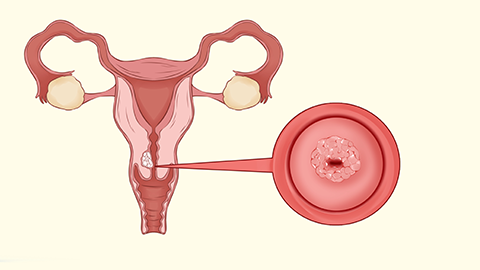What are the early symptoms of uterine cancer?
Generally, as a malignant tumor occurring in the uterus, the early symptoms of uterine cancer mainly include irregular vaginal bleeding, postmenopausal bleeding, abnormal vaginal discharge, contact bleeding, and mild discomfort in the lower abdomen. Detailed analysis is as follows:

1. Irregular vaginal bleeding: Vaginal bleeding occurs outside of the menstrual period, with no regular pattern. Sometimes it may only be light spotting lasting for several days, while at other times the bleeding may be heavier, similar to menstrual flow. The bleeding may stop on its own but tends to recur repeatedly, clearly differing from the cyclical bleeding of normal menstruation.
2. Postmenopausal bleeding: Vaginal bleeding in postmenopausal women is a common early symptom. The bleeding is usually light, often appearing as spotting of dark red or bright red blood. It does not follow a fixed cycle and may occur occasionally or reappear after intervals of time. It is often mistaken for a return of menstruation ("re-menstruation").
3. Abnormal vaginal discharge: Increased vaginal discharge may occur, initially presenting as thin, white or pale yellow discharge without a significant odor. As the condition progresses, the discharge may become blood-tinged. If an infection is present, purulent discharge may develop, accompanied by a mild odor. This differs significantly in quantity and nature from normal vaginal discharge (leukorrhea).
4. Contact bleeding: Light vaginal bleeding may occur after sexual intercourse or gynecological examinations, with bright red blood. This is because the tumor tissue is fragile and prone to bleeding when rubbed or touched. This type of bleeding typically occurs immediately after contact, is usually minimal, and stops on its own.
5. Mild lower abdominal discomfort: Some patients may feel a slight sensation of pressure or dull pain in the lower abdomen. The pain is mild and often intermittent, possibly becoming slightly more noticeable after physical exertion or around the time of menstruation. It typically improves with rest and may be mistaken for ordinary abdominal discomfort.
If any of these symptoms appear in daily life, regular gynecological examinations, attention to bodily changes, and maintaining a healthy lifestyle, such as eating a balanced diet and engaging in moderate exercise, can help detect abnormalities promptly and maintain overall health.




